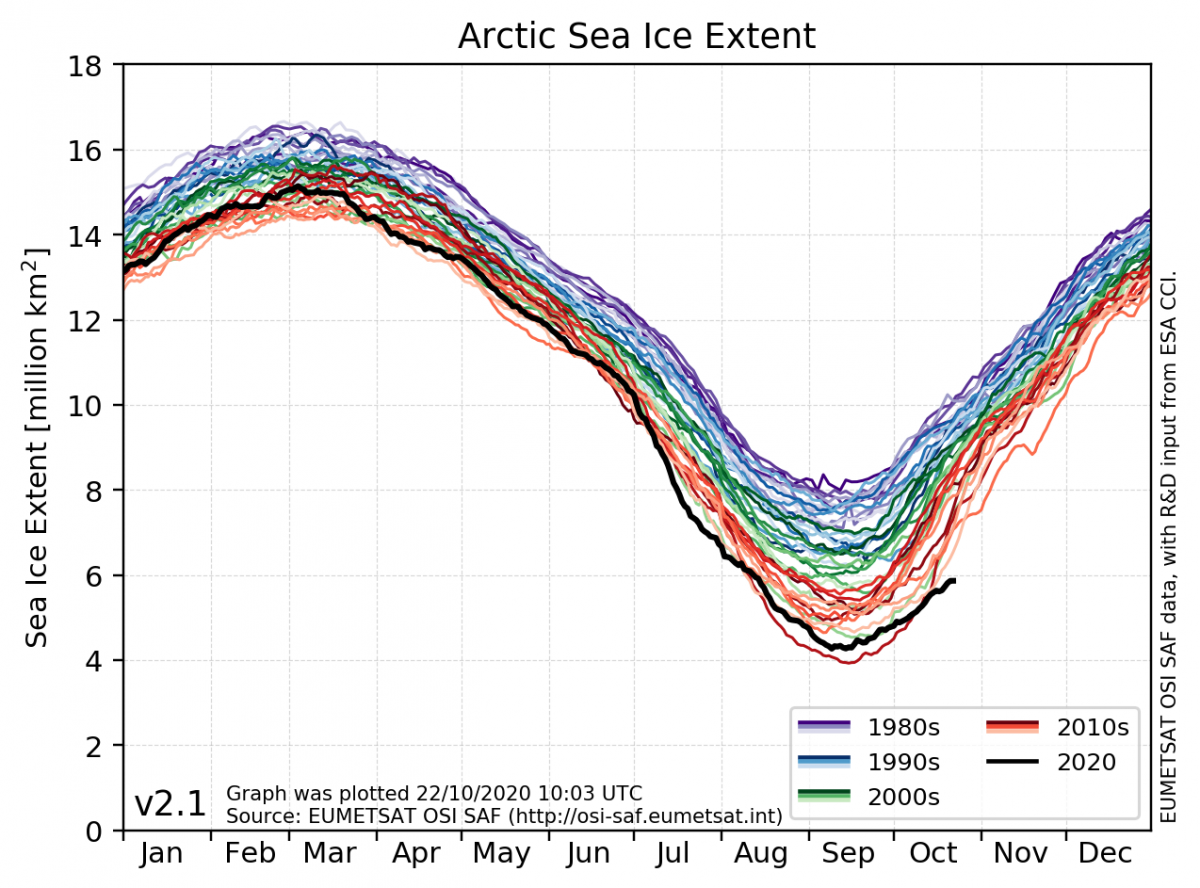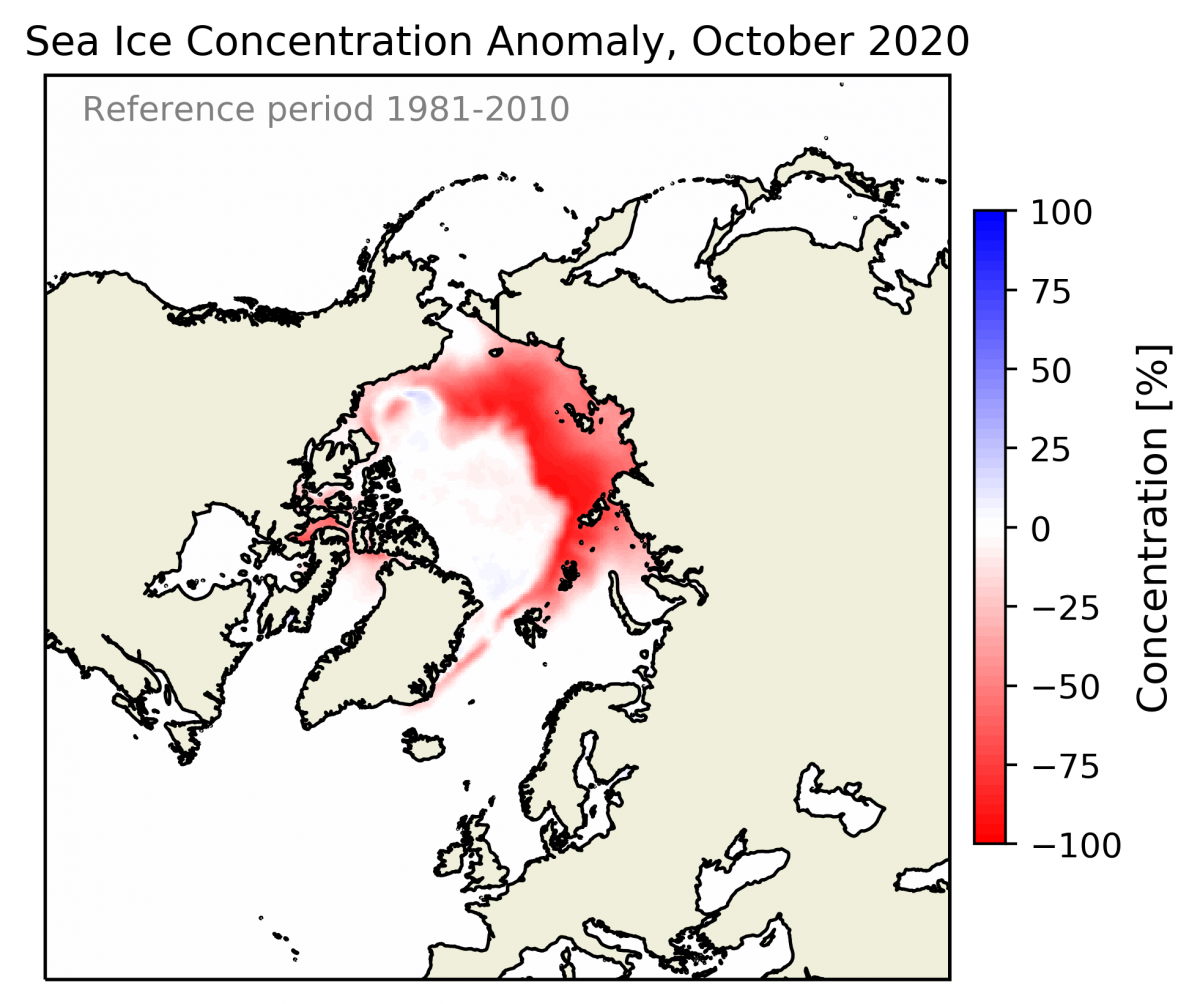So far, 2020 is one of the years we have measured the least sea ice in the Arctic. In October, almost four million square kilometers of ice are missing compared to what was common in the 80s. This corresponds to an area ten times the size of Norway.
"As a whole, the area of sea ice in 2020 is one of the smallest we have measured in the Arctic. At the same time, it is difficult to say that the year stands out - it continues the trend we have measured in the last 40 years: There will be less sea ice, while the temperature increases", says climate researcher Thomas Lavergne at the Norwegian Meteorological Institute.
The Norwegian Meteorological Institute monitors the sea ice daily. We have never measured so little ice in October as we have done in recent days. July was also at a record low, while April, August and September had the second lowest ice extent.

At cryo.met.no you will find daily updates of the sea ice.
The Arctic may become ice-free in the summer before 2050
It is common for some of the ice to melt during the summer, and then freeze again in the autumn and winter. Now this freezing is happening very slowly compared to before. The reason is that the Arctic Ocean is warmer.
"This is happening as a result of man-made climate change, i.e. our greenhouse gas emissions. We lose three square meters of sea ice in the summer with every tonne of CO2 emitted", says Lavergne.
If current CO2 emissions continue, the Arctic Ocean could become ice-free in the summer before 2050, according to the United Nations' Intergovernmental Panel on Climate Change (IPCC) special report on the sea and ice, which was published in September last year.

Less sea ice than normal around Svalbard
Around Svalbard there is also less ice than normal. Now in October, most sea ice is missing north of Russia, in the Barents Sea and around Svalbard.
In the 80s and 90s, it was common for polar bears to come to Hopen, located southeast of Svalbard, around this time to find winter dens on the island.
"It is more difficult for them today as the ice freezes later", says analyst Trond Robertsen at the Ice Service at the Meteorological Institute.

Also read our previous cases about sea ice in the Arctic:

